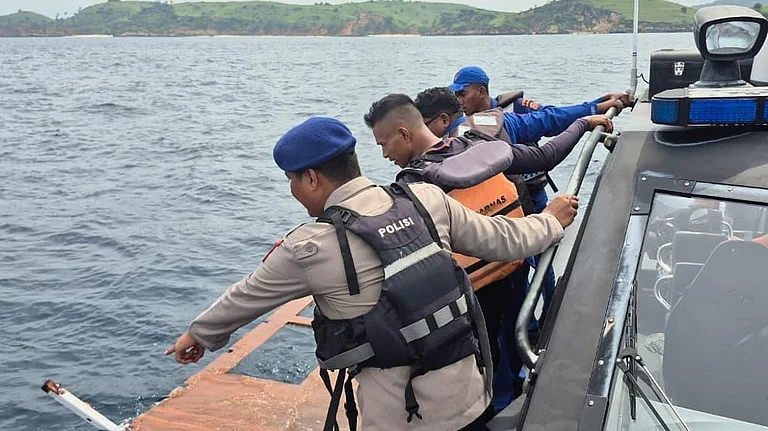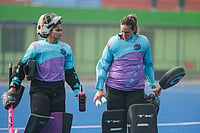Delhi Water Minister Saurabh Bhardwaj on Sunday said it is "strange" that Lieutenant Governor V K Saxena takes credit for the improvement in the Yamuna river's water quality while all accountability lies with the Kejriwal government.
In a statement released by his office, Bhardwaj said no significant improvement in the Yamuna water quality could be achieved without enhancing the quality and capacity of sewage treatment plants.
"It is quite strange that any improvement in the pollution of Yamuna is claimed by the LG while all the accountability and answerability lies with the Arvind Kejriwal government," Bhardwaj said.
Bhardwaj said the reference parameters for sewage treatment plant functioning were recently changed nationwide, and states have started rehabilitating their STPs accordingly.
The Delhi Jal Board (DJB) has been at the forefront of these efforts. It has already awarded contracts to professional firms for the rehabilitation of 11 STPs, aiming to upgrade them to the latest parameters of BOD (Biochemical Oxygen Demand) and TSS (Total Suspended Solids) of less than 10 milligram per litre, he said.
Once rehabilitated, the total volume handled by these STPs would reach 476 MGD (Million Gallons per Day), he added.
Simultaneously, an additional capacity of 130 MGD will be created in these existing STPs, with 80 MGD to be achieved by December 2023, 98.5 MGD by March 2024, and the remaining 130 MGD by June 2024, the minister said.
He said the DJB has undertaken the upgradation of four STPs -- Okhla, Ghitorni, Mehrauli, and Vasant Vihar -- using low-cost dosing technology.
He said the DJB has also been actively providing household connections in sewered areas.
Over 4 lakh households have already been connected, and 571 jhuggi-jhopri clusters have been tapped, redirecting wastewater to the sewer network. Additionally, 33 out of the 76 drains have been tapped and diverted, with plans to tap the remaining drains by December 2023.
The 22-km stretch of the river between Wazirabad and Okhla in Delhi, which is less than 2 per cent of the river length, accounts for around 80 per cent of its pollution load.
Untapped wastewater from unauthorised colonies and jhuggi-jhopri clusters, and poor quality of treated wastewater discharged from sewage treatment plants (STPs) and common effluent treatment plants (CETPs) is the main reason behind high pollution levels in the river.
The Delhi government has promised to clean the Yamuna to bathing standards by February 2025. The river can be considered fit for bathing if BOD is less than 3 milligram per litre and dissolved oxygen (DO) is greater than 5 milligram per litre.
Delhi generates around 770 million gallons a day (MGD) of sewage. The 35 STPs located at 20 locations across Delhi can treat up to 630 MGD of sewage and have been utilising around 85 per cent of their capacity. The rest of the untreated sewage falls into the river directly.
Government data shows that only 10 out of the 35 operational STPs in the capital meet the prescribed standards for wastewater (BOD and TSS less than 10 mg per litre). Together, they can treat 150 million gallons of wastewater a day.
According to the city government's Outcome Budget, 29 per cent of the sewage generated in Delhi in 2021-22 fell into the Yamuna untreated. It was 28 per cent in 2019-20 and 26 per cent in 2020-21.
The DJB is upgrading and rehabilitating the existing STPs to be able to meet the prescribed norms and reduce the pollution load in the Yamuna.
However, several projects have been delayed due to the Covid pandemic, air pollution-related construction ban, and delays in land allotment and tree-cutting permissions. Sewer networks have been laid in just 747 of the 1799 unauthorised colonies in Delhi.
Multiple reports submitted by the Delhi Pollution Control Committee (DPCC) to the Union Jal Shakti Ministry have highlighted that the river cannot become fit for bathing in the absence of a minimum environment flow -- the minimum quantity of water flow that a river must have in order to preserve its ecosystems and meet the bathing standards.
A study conducted by the National Institute of Hydrology, Roorkee, in 2019 recommended that 23 cubic metre per second (cumec) of water (437 million gallons a day) be released in the river from the Hathnikund Barrage in Haryana's Yamuna Nagar district in the lean season for sustaining downstream ecosystems.
At present, only 10 cumecs (190 MGD) are released from the barrage. A gap of 13 cumecs (247 MGD) remains.
According to the ministry, the water-sharing agreement of 1994 among the riparian states of Uttarakhand, Himachal Pradesh, Uttar Pradesh, Haryana, Rajasthan and Delhi is due for revision only in 2025.
According to the DPCC, an e-flow of 23 cumecs will bring down the level of biological oxygen demand from 25 milligram per litre to 12 milligram per litre and other steps being taken will bring it down further.
-With PTI Input


























